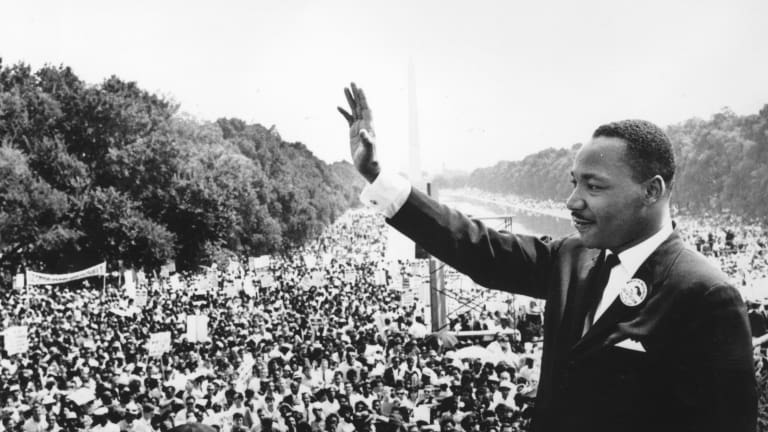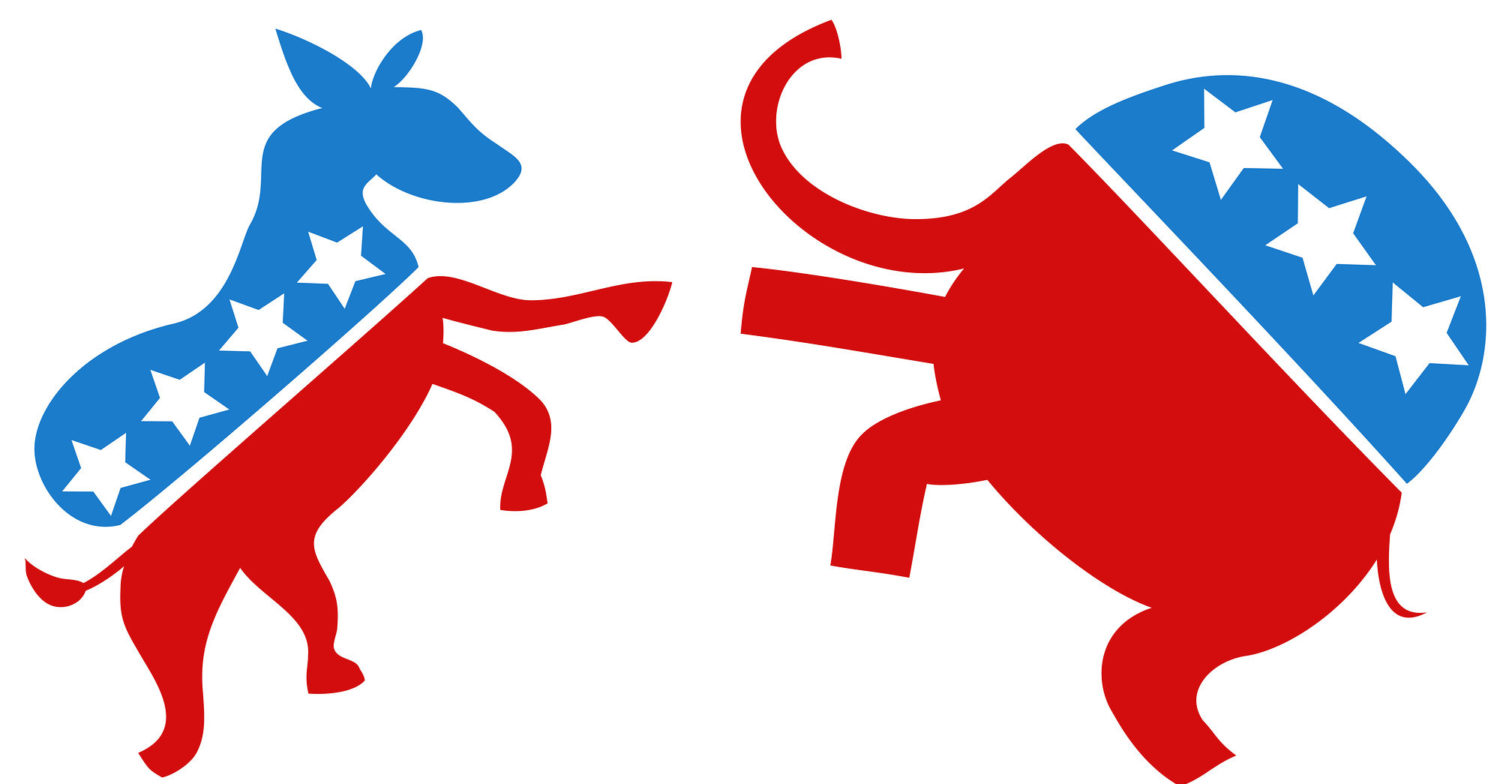
Happy Martin Luther King Jr. Day, y’all. In honor of this holiday, I wanted to write a bit of a tribute to one of the greatest civil rights heroes of all time. I didn’t want to simply re-tread the usual information that we all learned about in grade school, though. So I decided to talk about one of the lesser known aspects of Dr. King’s legacy: the Poor People’s Campaign.
A Campaign of Unity
Martin Luther King Jr.’s whole life was a message of unity, however, the Poor People’s Campaign in particular was an almost unprecedented attempt to unify all poor people. Not just black people, but also Hispanics, Native Americans, and – yes – even white people.
Dr. King recognized that the real enemy of the majority of the country was income inequality: a stark divide between the rich elites – who, yes, were almost universally white – and everyone else.
I’m not trying to downplay the role of racism here; quite the contrary. No one can deny the link between racism and extreme poverty. Dr. King emphasized that himself in many speeches. In his own words:
“The thing wrong with America is white racism.”
“However difficult it is to hear, however shocking it is to hear, we’ve got to face the fact that America is a racist country.“
The Last March of Martin Luther King Jr., The Atlantic, April 4th, 2018
The overt racism that went on, unchecked, in Dr. King’s time was vile, abhorrent, and inexcusable, and he is rightly praised for the Civil Rights Movement that combated them.
However, towards the end of his life, Dr. King came to acknowledge the evils of capitalism and how it is inherently designed for inequality, not just towards minorities, but towards anyone not privileged, which often included poor whites – by design.
A Game of Us Vs. Them
Michelle Alexander talks about this concept in great detail in her phenomenal book, The New Jim Crow. In brief, the one constant in race relations in our country has been elite douchebags conspiring for ways to maintain their power from the “unwashed masses”. To do so, the scapegoating and racism against minorities – beginning with Native Americans and later advancing to black people and, still later, immigrants – was vital.
The elites knew that the masses outnumbered them and a union between all disenfranchised groups against them would spell their doom. So they fomented discord. They used racism as a tool to make the poor whites believe they were superior to someone, and thus make them less likely to revolt for fear of losing whatever small privilege they possessed.
So it’s been throughout America’s history. Again, Michelle Alexander explains all this in far more detail and I recommend reading her book.
Dr. King’s Vision
The Poor People’s Campaign was inspired by a visit Dr. King paid to the poorest area of the country in 1966: Marks, Mississippi.
During this visit, Dr. King & close confidant Reverend Ralph Abernathy saw with their own eyes the extent of extreme poverty as they witnessed malnourished school-children eating a quarter of apple and a few crackers for lunch. There was no other food available.
This vision stuck with Dr. King and inspired him to envision a unified coalition of multi-racial, disenfranchised people marching upon Washington D.C. in non-violent uprising to force social – and economic – change.
At the highest moment of the campaign during Dr. King’s life, 53 organizations representing all poor groups, white and otherwise, declared unanimous support for the campaign. It seemed that his vision would soon become reality.
Episode V: The Government Strikes Back
The eyes in the white city were not blind to this fomenting revolution. The FBI had long been keeping tabs on Dr. King’s – and other – movements preaching social justice. They labeled them as “hate groups” – the catch-all predecessor to our current “terrorist groups” – and were monitoring them in fear that they would attempt to overthrow the government.
Upon learning of the Poor People’s Campaign, which not only preached racial justice but also economic justice, they freaked out. While they had long been wary of him, Dr. King’s shift in message towards unifying all the disenfranchised caused a fairly severe escalation.
The COINTELPRO campaign, linked above, expanded to 44 FBI field offices from 22. Further, memos now specifically named Dr. King instead of referring to him obliquely. J. Edgar Hoover himself, the FBI Director at the time, went so far as to label Dr. King as a “‘Messiah’, who could unify and electrify the militant black nationalist movement”.
Of course, the “militant black nationalist” thing was just a cover. Dr. King preached nothing but non-violence, as we all know. But such are the scare tactics used by the establishment. It was the unification of all the poor that terrified them, not just “militant blacks”.
Congress itself began issuing proclamations. Several senators spoke out against the movement, accusing other congresspeople of “bending the knee” to the movement. 20,000 soldiers were brought to D.C. and prepared for a military occupation “should the Poor People’s Campaign pose a threat.”
What threat a bunch of unarmed, underfed, and peaceful protestors posed was not addressed. Sound familiar?
Oh yea, the FBI also spread misinformation about the campaign to try to undermine it. This included: wiretaps, rumors that the campaign was bankrupt, participants would not be safe due to its violent nature, & finally that any participants would lose their welfare benefits when they got back home.
Yea. Despicable. Yet not surprising if you know anything about how the government works.
Memphis Sanitation Strike
I can’t talk about the Poor People’s Campaign without also mentioning the Memphis Sanitation Strike. In brief, during Dr. King’s preparations for the march on D.C., two sanitation workers were crushed to death by shitty equipment. Equipment, by the way, that they had been warning against for a long time.
This tragedy was the latest in a long line of grievances including overt racism, shitty pay, and general mistreatment. Tensions reached a boiling point and 1,300 workers went on strike.
Dr. King went to show solidarity with the workers, despite some misgivings from his camp about how he was deviating from the campaign planning. However, Dr. King knew that this strike was a prime example of his Poor People’s Campaign. Again in his own words during a speech delivered to the striking workers:
“You are highlighting the economic issue,” King told a packed crowd of 15,000 at Mason Temple. “You are going beyond purely civil rights to questions of human rights.”
The Last March of Martin Luther King Jr., The Atlantic, April 4th 2018
Unfortunately, whether because of FBI plant meddling or other reasons, the subsequent march in Memphis descended into violence and Dr. King had to be rushed away. Momentarily dispirited, he rallied and resolved to strengthen the message of non-violent protest in another march, and in the Poor People’s Campaign generally.
He would not live to see this through, for he was assassinated not long afterwards.
The Campaign Realized
In his stead, Coretta Scott King led a march of 7,000 to Washington D.C. Ultimately, 50,000 people gathered in the ad-hoc “Resurrection City” that sprang up right in the heart of the nation. It stood for six weeks, and the people protested their inequality peacefully. They called for an Economic Bill of Rights which would guarantee them food, fair wages, housing, and other basic things.
Despite some set-backs such as the assassination of Robert F. Kennedy, D.C. residents harassing them, and one dark moment of police brutality in which several protesters were beaten and trampled to death, the movement thrived and persisted.
On June 20th, however, the government had had enough. They mobilized their forces – the police – and through the heavy usage of tear gas and other techniques of force, evicted all the residents of Resurrection City, arresting as many as they could.
Pockets of violence erupted. The protesters asserted that it was instigated by the police and their agents’ provocation. The cops claimed the protesters were just violent. I tend to believe the protesters, personally.
Regardless, rocks were thrown, tear gas was unleashed, people were beaten and arrested, and ultimately the protesters were driven from D.C. and Resurrection City was closed. The Campaign was over.
The Aftermath of the Poor People’s Campaign
Though it had the highest of ideals and goals, Martin Luther King Jr.’s Poor People’s Campaign was ultimately a failure. The Economic Bill of Rights they sought never came to pass. Worker inequality continued. In fact, it got worse. We’re living in it now.
Worse, the movement itself now seems to regret ever embarking upon it, citing the expenditures of food ($27,000 per week, about $199,000 today) causing it to run out of money. Media portrayals were also unkind, calling it a disorganized mess in comparison to the 1963 Civil Rights marches.
That’s not to say it achieved nothing, however. From the Wikipedia entry:
“The campaign did produce some changes, however subtle. They included more money for free and reduced lunches for school children and Head Start programs in Mississippi and Alabama. The USDA released surplus commodities to the nation’s one-thousand poorest counties, food stamps were expanded, and some federal welfare guidelines were streamlined. Marian Wright Edelman formed a network of agency bureaucrats concerned about poverty issues. Activists in the National Welfare Rights Organization also gained important connections in the capital.”
Poor People’s Campaign, Wikipedia
So Dr. King did achieve something, though it was far short of the massive, systemic change he envisioned.
The Campaign Today
That’s right, the Poor People’s Campaign is back, baby. Inspired by the work of Dr. King, modern day activists have taken up the torch of uniting all disenfranchised people against those oppressing them. I urge you to check them out.
This new Poor People’s Campaign is helmed by none other than the Reverend Dr. William Barber II, former President of the NAACP and all-around activism bad-ass. He has been called “the most important progressive political leader in [North Carolina] in generations” by historian Timothy Tyson, and is credited with building a “statewide interracial fusion political coalition that has not been seriously attempted since 1900.”
Through the new Poor People’s Campaign, he is channeling his formidable career in fighting for human rights into picking up the mantle of Dr. King, and continuing his last vision.
Perhaps most important this time around, the people are not alone. Though we still face substantial resistance in government, we now have allies amongst them, not least of which is Bernie Sanders and candidates like him.
Bernie is fighting for the Economic Bill of Rights that Dr. King envisioned, and that started life with FDR. The will of the people is behind him, just as it was for Dr. King. We have a very real opportunity today to realize Dr. King’s dream.
But we need everyone to join in the fight. And it will be a fight. Power does not cede itself willingly. Beware the “polite racism“ of white liberals. Protect and advance the vision of Martin Luther King Jr. by doing what you can to assist the new Poor People’s Campaign and it’s greatest champion: Bernie Sanders.
Happy Martin Luther King Jr. Day everyone!

Dear Mike,
Thanks for reminding everyone about Dr King’s important campaign for economic justice. I think that your article is very timely. I hope you do not mind me mentioning my book on Dr Martin Luther King Jr and the Poor People’s Campaign of 1968 which has just been published by the University of Georgia Press as part of the Morehouse King Collection Series on Civil and Human Rights. I hope that it will be of interest to anyone interested in the King legacy.
Dr Robert Hamilton